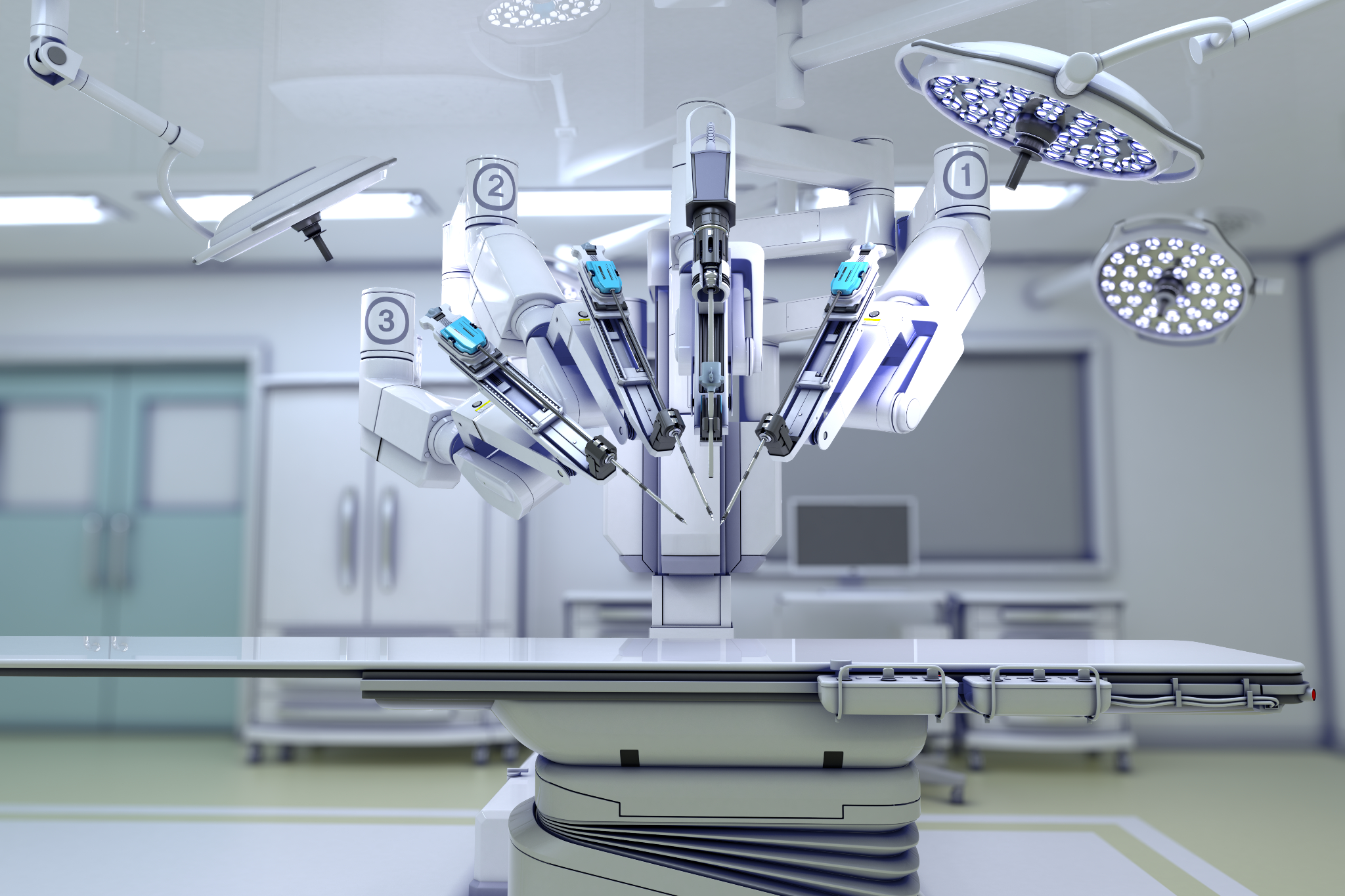Da Vinci Surgical Robot
Source: Wired
![Da Vinci [Via Intuitive]](/post-images/20231212-da-vinci.png)
The Da Vinci surgical robot, developed by Intuitive, is an almost 8-foot robot equipped with four surgical arms. It is controlled by a surgeon through a console, allowing for precise movements and wrist control, unlike traditional laparoscopic surgery. The robot does not independently perform surgery but serves as a tool operated by the surgeon. Another medical professional assists at the bedside, handling instrument setup and insertion.
Despite initial skepticism since its FDA approval in 2000, robotic surgery has seen a significant increase, with a 2020 study reporting a rise from 1.8 percent in 2012 to 15.1 percent in 2018. Urological and gynecological surgeries have especially witnessed substantial growth in the use of robotic assistance. With the help of these technological advancements, the field of medical education is undergoing rapid changes to help develop the next generation of surgeons.
Alisa Coker, the director of robotic surgery education at Johns Hopkins, specializes in hernias, bariatric surgery, and foregut surgery, conducting the majority of her surgeries with the Da Vinci robotic system. She recognized the increasing demand from surgery residents to learn robotics and developed a curriculum, including a “boot camp” for interns to familiarize themselves with robotic surgery. The curriculum incorporates the use of robotic simulators, resembling video games, to teach necessary skills.
The effectiveness of video game experience in improving basic robotic surgery abilities has been studied, including a 2023 study in the Journal of Robotic Surgery with findings suggesting a positive impact on tasks such as camera targeting and suturing. However, opinions vary on the difference between video game skills and robotic surgery, emphasizing the unique hand-eye coordination required for the latter.
Currently, there is no standardized curriculum for surgical robot training, but students typically practice on simulators, assist in surgeries, and transition to console work with an attending surgeon’s guidance. The emphasis is shifting from the time spent on simulators to identifying factors that truly indicate proficiency in robotic surgery. Challenges include limited access to expensive robots and simulators.

Despite concerns, robotic surgery has educational benefits, providing students with a surgeon’s perspective by allowing them to see precisely what the lead surgeon sees. Experts like Johannes Kratz and Ashutosh Tewari highlight improved learning through robotic surgery, with Tewari advocating for early exposure in residency programs.
Advancements in robotic surgery and related technologies are anticipated, with new robots entering the market and expired patents potentially reducing costs. Some projects aim to enhance surgical education through augmented reality and AI applications. Companies like OssoVR explore virtual reality glasses for immersive training without patient risk.
However, educational issues persist due to the high cost of simulators. As technology evolves, the next generation, more tech-savvy, may adapt readily to changing educational landscapes that incorporate innovative surgical technologies.
Tags: Technology
![Google Gemini [Google Deep Mind]](/post-images/20231211-google-gemini.webp)
![Sam Altman attends the Asia-Pacific Economic Cooperation (APEC) CEO Summit in San Francisco, Cailfornia, U.S. November 16, 2023 [REUTERS/Carlos Barria]](/post-images/002-sam-altman.jpg)
![Henry A. Kissinger in 1979 [Neil Leifer/Sports Illustrated, via Getty Images]](/post-images/20231130-kissinger.jpg)
![Professor Abdul Basir, a faculty member in the Department of Islamic History and Culture at DU | Professor Nisar Hossain, Dean of the Faculty of Fine Arts [Image collected]](/post-images/20240822-du.jpg)

![Anjir Liton, former DG of Bangladesh Shishu Academy [Image collected]](/post-images/20240822-shishu-academy.jpg)